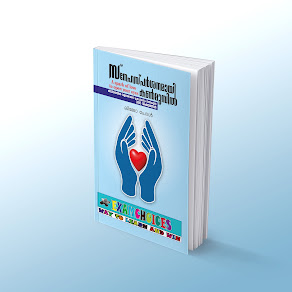HIGHER SECONDARY SCHOOL TEACHER-COMPUTER SCIENCE/COMPUTER
APPLICATION & HIGHER SECONDARY SCHOOL TEACHER-COMPUTER SCIENCE/COMPUTER
APPLICATION(JUNIOR)
1.Discrete Structures:Set,Relations,Functions,Pigeonhole
Principle,Inclusion-Exclusion principle,Equivalence and Partial
Orderings.Elementary Counting Techniques
Comaptibility:Models of computation-Finite Automata,Pushdown
Automata,Non-determinism and NFA,DPDA and PDA s and Languages accepted by these
structures.Grammars-types of grammars-type0,type1,type2 and type3.The
relationship between types of grammars,Languages,Non-computability,Non-computable
problems
Groups:Finite fields and Error correcting/detecting codes
Propositional logic.Predicate logic.Well-formed
formulae(WFF).
Satisfiability and Tautology.
2.Computer Arithmetic:Logic families:TTL,ECL andC-MOS
gates.Boolean algebra and Minimization of Boolean functions,Flip-flops-types,race
condition and comparison,Design of combinational and sequential circuits.
Representation of Integers:Octal.Hex.Decimal and Binary 2’s
complement and 1’s complement arithmetic.Floating point representation.
3.Programing in C and C++:Programming in C:Elements of
C-Tokens,identifiers,data types in C,Control constructs in C,Sequence,selection
and iteration.Structured data types in C-arrays,structs,unions,strings and
pointers.
Object-Oriented Programming Concepts:Class-object,instantiation,Inheritance-polymorphism
and overloading,aggregation,abstract classes,generalization as extension and
restriction.Object oriented design. Multiple inheritance
C++ programming :Elements of
C++.Tokens,Identifiers,Variables and constants.Data types,Operators.Control
statements,Functions,parameter passing,Class and objects,Constructors and
destructors,overloading,inheritance,Templates,exception handling
4.Relational Database Design and Query Languages:E-R
diagrams,Transformation of E-R models to relational
design,Normalization-1NF,2NF,3NF,BCNF and 4NF.
SQL:Data Definition language(DDL),Data manipulation
Language(DML),Data Control Language(CDL)Commands.Database objects like
views,indexes,sequences,synonyms,data dictionary,Embedded SQL,QBE Query Processing
and Optimisation,Centralised and Distributed Database,Security,Concurrency and
Recovcery in Centralised and Distributed Database systems,Object Oriented
Database Management Systems-Concepts,Composite objects,Integration
with RDBMS applications
5.Data Structures and Algorithms:Data,Information.Defintion
of data structure,Arrays,stacks,queues,linked lists,trees,graphs,priority
queues and heaps.File Structures:Fields,records and
files.Sequential,direct,index-sequential and relative files.Hashing,inverted
list and multi-lists,b-trees and B+trees.
Graphs:Defintion,walks,paths,connected graphs,regular and
bipartite graphs,cycles and circuits.Tree and rooted tree,Spanning
trees,Ecentricity of a vertex radius and diameter of a graph,Hamiltonian and
Eulerian graphs.Planar graphs.Sorting and Searching Algorithms,Analysis of
Algorithms,Interpolation and Binary Search.Asymptotic notations-big oh.omega
and theta.Average case analysis of simple programs like finding of a maximum of
n elements.Recursion.Quick sort.Design of Algorithms(Divide and Conquer.Greedy
method.Dynamic programming.Back tracking.Branch and Bound)
6.Data communication and Computer Networks:Data
Communication :Analog and Digital transmission.Asynchronous and Synchronous
transmission.Transmission media.Multiplexing and Concentration,Switching
techniques.
Polling.Channel capacity.Transmission media-twisted
pair,coaxial cables,fibre-optic cables,wireless transmission-radio,microwave
and infrared waves.Light wave transmission.Telephone-local
loop,trunks,multiplexing,switching,narrowband ISDN,broadband ISDN.ATM,High
speed LANs.Cellular Radio,Communication satellites geosynchronous and
low-orbit,Refeerence Models:The OSI model,TCP/IP model.Topologies,Networking
Devices.Protocols for-(i)Data link layer(ii)Network layer,and)(iii)Transport
layer,TCP/IP protocols,Networks security,Network administration.
Local Area Networks(LAN),Metropolitian Area Networks(Man),Wide
Area Networks(WAN).Wireless Networks,Inter Networks.
Internetworking:Switch/Hub.Bridge.Router.Gateways.Concentrated
virtual circuits.
Tunneling,Fragmentation,Firewalls.
Routing:Virtual circuits and datagrams.Routing
Algorithms.Congestion control
Network Security:Cryptography-public key,secret key,Domain Name System
(DNS)-Electronic Mail and World Wide Web(WWW).The DNS,Resource Records.Name
servers.E-mail architecture and E-mail Servers.
7.System software and Compilers:Assembly language fundamentals(8085 and 8088 based
assembly language programming).Assemblers-2-pass and single-pass.Macros and
macro processors.
Loading,linking,relocation,program relocatability.Linkage
editing.
Text editors,Programming Environments.Debuggers and program
generators.
Compilation and Interpretation.Bootstrapping.Phase of
compilation.Lexical analysis.LEX.
Context free grammars.parsing and parse trees.Representation
of parse trees and rightmost and leftmost derivations,Bottom up parsers-shift-reduce,operator
precedence and LR.YACC.
Top down parsers-left recursion and its removal.Recursive
descent parser.Predictive parser.
Intermediate codes-Quadruples,Triples,Indirect
Triples.Intermediate code generation,Code generation,Code optimization.
8.Operating Systems:main functions of operating
systems.multiprogramming ,Multiprocessing and Multitasking.
Memory management;Virtual memory,paging,fragmentation.
Concurrent processing:Mutual exclusion.Critical regions,lock
and unlock.
Scheduling:CPU scheduling.I/O Scheduling.Resource
scheduling.Deadlock and scheduling
Algorithms.Banker’s algorithm for deadlock handling.
The Unix system:File system,process management.Bourne
shell,shell variables,command line programming.
System calls:Creat,open,close,read,write,Lseek,Llink,unlink,stat,fstat,umask,chmod,exec,fork,wait,system.
9.Software Engineering:System Development life
Cycle(SDLC):Steps,Waterfall model.Prototypes,Spiral model.
Software metrics;Software Project management.
Software Design:System design.detailed design.function
oriented design,object-oriented design,user interface design.Design level
metrics.
Coding and Testing:Testing level metrics.Software quality
and reliablity.Clean room approach,software engineering.
10.Computer Graphics:Display systems.Input devices,2D
Geometry-Algorithms for drawing primitives,clipping and
windowing,windows,viewports,Graphic operations for transformations,3D
Graphics.Animation,Graphicsstandard.Applications.
Storage Devices,Input Tools.Authoring
Tools,Application,Files.
11.Programming Language Theory:Programming language
concepts,paradigms,models.
Data.Data types,Operators,Expressions.Assignment.Flow of
Control-control structures,I/O structures.I/O statements,user-Defined and
built-in functions.Parameter passing.
Principles,classes,inheritance,class
hierarchies,polymorphism,dynamic binding,refernce semantics and their
implementation.
Principles,classes,inheritance,class
hierarchies,polymorphism,dynamic binding,reference semantics and their
implementation.
Principles,functions,lists,types and polymorphism,higher
order functions,lazy evaluation,equations and pattern matching.
Principles,hoen clauses and their execution,logical
variables,relations,data structures,horn clauses and their execution,logical
variables,relations,data structures,controlling the search order,program
development in Prolog,implementation of Prolog,example programs in Prolog.
12.Current Trends and Technologies:The topics of current
interest in Computer Science and Computer Applications shall be covered.the
experts shall use their judgement from time to time to include the topics of
popular interest which are expected to be known by an ardent follower of the
field.Currently,they include:
Parallel computing
Parallel Virtual Machine (PVM)and message passing
interface(MPI)libraries and calls.Advanced architectures.Today’s fastest
computers.
Mobile computing:Mobile
connectivity-Cells.Framework,wireless delivery technology and switching
methods,mobile information access devices,mobile data internetworking
standards,cellular data communication protocols,mobile computing
applications.Mobile databases-protocols,scope,tools and technology.
E-Technologies-Electronic Commerce:Framework,Media
convergence of Applications,Consumer Applications,Organisation applications.
Electronic Data
Interchange(EDI):Concepts,Applications,(Legal,Security and Privacy)issues.
EDI and Electronic Commerce.Standardisation and EDI.EDI
Software Implementation.EDI Envelope for Message Transport,internet-based EDI.
Data warehousing:Data Warehouse environment,architecture of
a data warehouse methodology,analysis,design,construction and administration.
Data mining:Extracting models and patterns from large
databases,datamining
techniques,classification,regression,clustering,summarization,dependency
modelling,link analysis,sequencing analysis,mining scientific and business
data.
Principles of parallelism,co routines,communication and
execution,Parallel Virtual machine(PVM) and Message Passing Interface(MPI) routines and
calls.Parallel programs in PVM paradigm as well as MPI paradigm for simple
problems like matrix multiplication















It's what you do in your free time that will set you free-or enslave you.?-Jarod Kintz.
ReplyDeleteKERALA PSC ,UPSC Civil service online practices available .Don’t forget our Youtube Channel Subscribe.